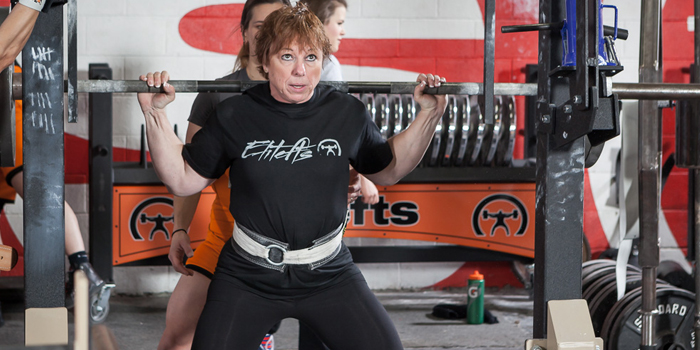
I am 55 years old. My goal is to share my strength journey and hopefully inspire or help others who have undergone setbacks, injuries, surgeries, and self-doubt. It is also my goal to share this for those who don’t really know how to get strong and stay strong in the event something does happen to them. Last but not least, it is for all those people who say you can’t grow muscle after 50. You are wrong.
People get injured and hurt all the time — walking down the street, stepping off a curb, being in a car accident, etc. It doesn’t have to be a sport or a gym related movement. They are called accidents, and accidents happen every day. Will your body be ready if you have an accident? Will your body be ready for surgery if it’s required? Will you be strong enough to undergo this surgery and will you recover quickly and properly? Well, I’m here to tell you that being strong going into any type of surgery will not only help you recover physically, but will also help the surgeons do their job on fixing you better. It will also help you recover better — and who doesn’t want a faster recovery? Nobody likes being laid up, incapacitated, or dependent on others for daily routine.
RECENT: Why We Powerlift — Getting Inside the Minds of New Lifters
My real journey started eight years ago when I underwent major back surgery, namely spinal decompression fusion surgery. I had rods and bolts inserted into my L4/L5 vertebrae, fusing them together. The doctors took bone from my hip and inserted it between the vertebrae to fuse the existing vertebrae together. There were plenty of risks, as with any surgery, but I was willing to take them to get rid of the pain I was in. I had two surgeons, one orthopedic, and one neurologist. My facet bones were broken, pressing onto the nerves of my spinal cord. I had tingling in my right leg and was starting to have permanent nerve damage. I was put on the urgent wait list and surgery was April 21, 2009.
The exact cause of the injury was never really determined. I never had a fall, an injury, or anything to relate to this. The doctor did say that when we grow, sometimes our facet bones don’t attach to the vertebrae properly and later in life we have issues. Prior to this surgery, I was in really good shape physically. I was lean, strong, active in the gym, and golfing on a regular basis. I remember hitting a huge milestone at the gym: I could do 11 unassisted chin-ups and a five-and-a-half-minute plank on a ball. I guess I never really knew what strong meant until I discovered powerlifting.
Along with injuries comes the chronic pain. Chronic pain causes depression, depression causes weight gain, and it all spirals downward after that. Finding the pain management system that works for you to try and get through is the key — survival of the fittest.
Fast forward to my one-year doctor checkup. I was a bit nervous waiting to see if the bone graph took properly. I knew I had overdone it a bit during recovery, so I was scared that I might not have allowed my body enough time to heal properly. To my surprise, with the doctor's happy approval I was "good to go!" The x-rays looked great, he said everything was fine, and he gave me the go-ahead to start going to the gym again. I remember walking out and Ken was already devising a plan to get me stronger. I was nervous because I didn't want to hurt myself, but the doctor said all was good and I would not have to see him again unless I had a problem. To this day, I have had no low back issues and have never returned to that doctor since.
Let My Real Strength Journey Begin
My husband Ken helped me get back to strong and beyond. We started off slow and light with kettlebells. I did some relatively light training and within six months I was competing in my first kettlebell competition, 18 months after major back surgery.
I’m not going to bore you with the next few years but I will sum it up. I began teaching kettlebells at several gyms in our area. Most people had never heard of kettlebells. Next thing you know, there was a waitlist at gyms wanting me to teach for them. I wanted to inspire and help others with their fitness goals, rehabilitation, and let people know it's never too late. You are never too old to start getting strong, especially after injury.
Enter Powerlifting
The past three years have been epic for me. I have competed in numerous powerlifting meets: The Canadian Nationals, the WPC Worlds twice, and the Arnold twice. I never dreamed of this, but it happened. I put in the work and now I hold over 30 national records and 18 world records. I set a goal to reach that 1,000-pound raw total and was not going to stop until I got it. I totaled 1,003 pounds at the 2016 WPC Worlds in Baton Rouge, Louisiana.
In fall of 2015, I tore my rotator cuff bench pressing 205 pounds. This was another setback to overcome. My surgeon was impressed how strong I was and how great a shape my tendons and ligaments were. I credit this to my kettlebell training — again another reason why training is so important to recovery. Last November I had rotator cuff surgery and spent three months recovering and rehabbing my shoulder.
MORE: 6 Months Post Shoulder Surgery Update!
I was having some issues with my knee, and after getting an ultrasound and MRI I was advised I required a total knee replacement. Well, as if that didn’t sting just a little bit. I did not mention I have had two previous knee surgeries as well during the past eight years. I’ve decided to prolong the knee replacement as long as possible.
I know I will do a meet this year to qualify for the Arnold again. For now, I am enjoying my off-season training and trying to remain strong. I have been working with the Earthquake Bamboo Bar with kettlebells. This is an amazing tool working on my tightness and all my small stabilizer muscles. I have been avoiding squatting, and to keep my legs strong I have been using the belt squat machine for heavy static holds, marching, and quarter squatting without putting pressure on my knee. I have been using the reverse hyper for not only my back but for leg raises, face pulls, pull-throughs, sitting lat rows, and one-arm rows. This machine is amazing. I have been using kettlebells keeping up my grip and forearm strength. You can see all my training on my blog page.
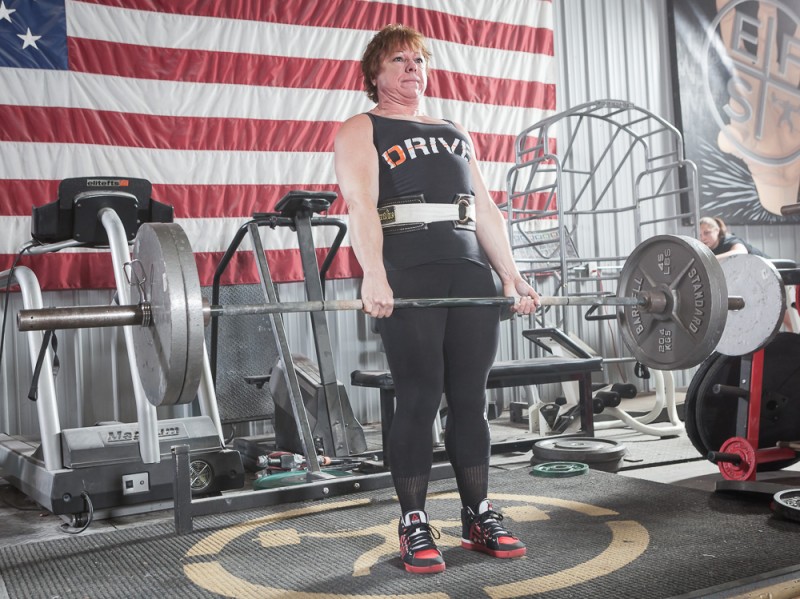
This past week I decided to do a strength experiment to see where I was at for my deadlift and bench. I am always curious to know where my strength base is sitting. I also wanted to ensure my off-season training is doing what I need and want it to do.
My max raw deadlift was 445 pounds and 451 pounds in single-ply. In training this past Monday I pulled an easy 416 pounds for a double.
My max bench is 200 pounds and this past week I hit an easy 185-pound single. I am still happy with this amount of strength for not training these main lifts for so long, which brings me to my next topic.
Rest and the Minimalist Approach
I have read so many times that people don’t want to take a week off training because they are afraid they will lose their strength. I don’t know about you, but I’m 55 years old with a few injuries haunting me. I can take weeks off at a time without doing anything at all. I can train just accessories and still maintain my strength. Remember REST (relax, enjoy, stress-free time); we grow when we sleep and stress is stress, whether mental or physical. Our bodies don’t react well to stress so give it a rest. I would be willing to bet you will be better for it in the long run.
The moral of my story is this: get strong and stay strong. You never know what card you will be dealt with at any given moment. This message isn’t just for competitors. When you're faced with adversity I hope you can handle it better. This message also goes out to all of you who are overcoming injury. Those of you who are suffering in pain, know you are not alone and there is help out there. Never stop, seek similar people and similar situations, get help and support from people who have "been there, done that," and be pro-active. The resources are available. If you want, you will find themOvercoming adversity is what I did, over and over again — and so can you.










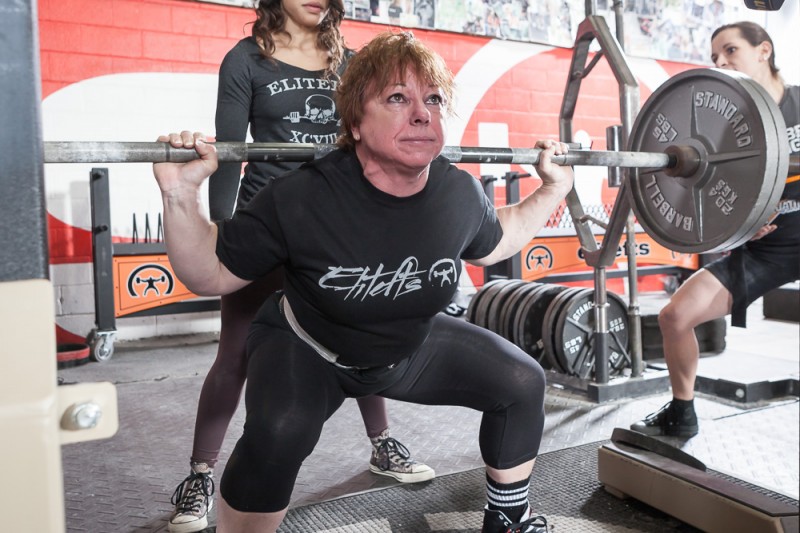
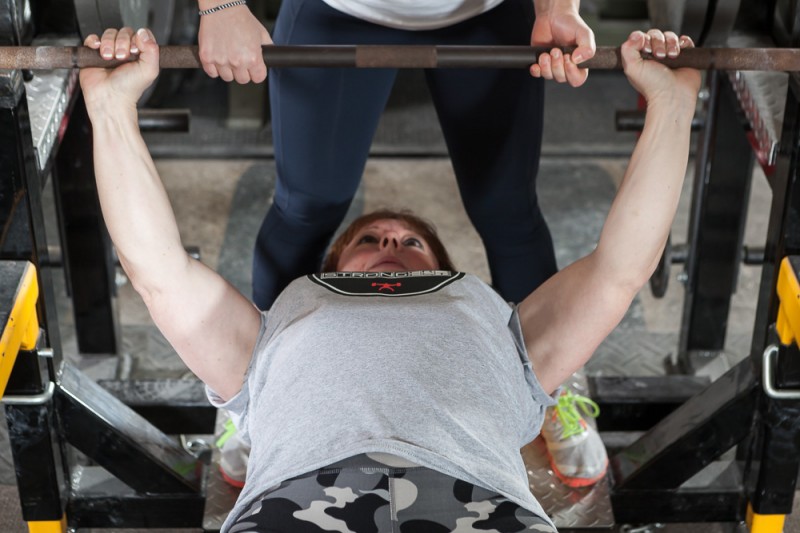
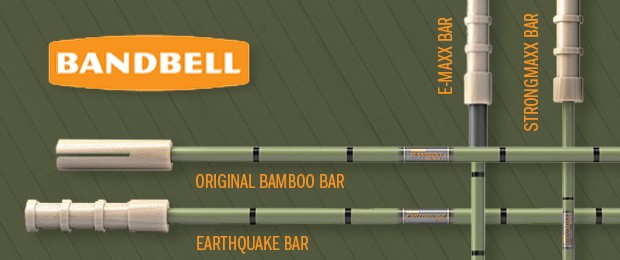
What was your path in choosing a Doctor for your joint issues? I am not sure what to look for (if I move in the right direction).
Thanks
I’m not certain where you are from and I know the health care system differs drastically between Canada and USA. My first question to you would be have you had an ultrasound, xray and or an MRI completed on your knee to ascertain the proper diagnosis? Never ignore pain, pain is a sign of something wrong so if it has been going on for months your next step would be testing to determine what is exactly wrong. I went to my family Doctor to get a requisition for the tests, xray, ultrasound and MRI. Then I was referred to an Orthopedic surgeon. The Surgeon needed these tests to determine how to treat me or recommend my options re: surgery or pain management, or physio. I was offered cortisone shots but turned them down. My next option is total knee replacement when I cannot take the pain any longer. I am managing my pain on my own using hyaluronic acid injections and a heavy duty joint pain relief formula. I have also been smart with my lower training trying not to do anything that bothers my knee or causes pain. Because I know what is wrong with my knee I am able to exercise around my injury and there are several exercises I can and continue to do to keep my legs strong without any knee pain.
Never be afraid to lose a bit of strength. It will come back quick, first priority should be proper diagnosis so that you don’t make your injury worse. Once you know what the problem is then train around that issue to keep your strength up. You will be surprised even with a few months of rest the strength that you will still have.
What do you do if the joint fails? Well, I guess you won’t know if it will fail during training until you know what is wrong. For example, my Dr. told me that I could go ahead and Deadlift at the Arnold’s as deadlifting was not going to make my knee any worse as it was already worn out. The worst case scenario for me was the knee would become unstable under load bearing and I could fall down. So guess what, I pulled and didn’t fall down. I wore really tight supporting knee sleeves that helped while training and competing. There are lots of things you can do to train around injuries and remain strong during the process. The first step is the proper diagnosis. Sorry for the long short story, and hope this helps.
Best of luck to you, thanks for following my journey.
Stay Strong